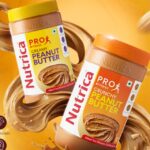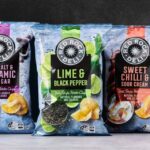As environmental concerns and health awareness rise, consumers are increasingly turning to vegetarian alternatives and eco-conscious food choices. The food industry is responding with sustainable practices, from using natural ingredients to adopting eco-friendly packaging, observes Rajat K Baisya.
Table of Contents
Sustainability issues, environmental concerns, and concerns about human health and nutrition are driving consumers to adopt a vegetarian lifestyle. The trend is evident. Consumers are turning towards vegetarian alternatives to non-veg food and food products. It started about a decade ago, slowly but surely. During the last couple of years, the momentum has picked up due to the relentless efforts of the marketers supported by the food ingredients manufacturers, including natural and nature-identical flavours, and natural additives such as emulsifiers and texturisers.
No marketer is willing to declare anything in their product label as synthetic. Processors would like to make the product look natural and, as such, resort to using eco-friendly packaging materials and green technologies, recycling the waste, and selectively using food ingredients to participate in governmental and societal efforts to be seen as contributors to sustainability and circular economy.
Sustainable food production doesn’t mean only sustainable agricultural practices for the production of primary foods. Food processors globally are increasingly focusing their attention on the environmental impacts of food processing and manufacturing, and this itself is becoming the primary objective of the Farm to Fork strategy. It is also a hallmark initiative of the new European Green Deal.
There are four major steps that food processors in all markets, including developing, emerging, and developed markets around the world, are trying to implement to reduce their environmental footprint. These are:
1. Making use of Eco-friendly food packaging
Food packaging is a major source of waste and pollution. Over 78 million metric tons of plastic packaging is produced each year, and only 14% of it is recycled. Plastic is usually made from non-renewable sources like petroleum oil or natural gas, and ultimately, a huge amount of plastic ends up in landfills. Processors across the food industry are stepping up to the challenge to find innovative ways to minimise the environmental impact of food production, processing, and packaging.
Food marketers these days are using environmentally friendly packaging materials like glass and metal. However, glass has other disadvantages, such as relatively higher wastage due to breakage and higher freight costs. However, glass has made a comeback as processors’ choice once again, as we have seen that over the last couple of decades, since 1990, plastic has replaced glass, and many glass manufacturers have closed down. Some of them have resurfaced again and resumed production.
Also Read: How Demand for Sustainability is Transforming Food Packaging
Also Read: Tetra Pak Continues to Advance its Sustainability Transformation
When it comes to metal food packaging, sustainably sourced aluminum is one of the most environmentally responsible choices. Aluminum is one of the most easily and widely recycled metals – the recycling process requires only 5% of the energy it takes to refine new aluminum. Metal cans, including aluminum, are normally recycled, and consumers are given incentives to return beverage and beer cans, for which large organized retail stores have automated machines to take those cans and give credit to the consumers for the same.
A growing number of manufacturers are opting for wood and paper-based alternatives. Wood and paper have the advantage of being biodegradable, renewable, and easily recyclable. They are also lightweight, resulting in lower freight costs, and are easy to handle, providing greater convenience for carrying and storage.
However, it is critical that the paper and wood used to make the packaging also come from sustainably managed forests. Some manufacturers are developing innovative alternative packaging from biodegradable materials, including seaweed, fibres from agricultural crops, and even fish skin, as well as starch and starch derivatives as natural and edible packaging materials. Some of these new alternatives have the potential to replace single-use plastics.

2. Efficient use of Energy and Water for Food Processing
Food Processing and production are both energy and water-intensive activities, and the processors use large amounts of groundwater. Water is used extensively in food processing, both as an ingredient and as process water for cleaning, sanitising, and sterilising, as well as a coolant. Processors are now resorting to the recycling of this water. Renewable energy and boiler flue gases are utilised for both heat recovery and carbon dioxide recovery. The deployment of smart meters and the implementation of energy efficiency and sustainable water management systems also help in the conservation of this natural resource.
3. Sustainable use of Food Ingredients in the Formulation
Certain ingredients have been linked to sustainability issues. For example, palm oil, cocoa, and coffee, for instance, have been linked to deforestation, habitat destruction, and child and forced labour, among other sustainability issues. Manufacturers use palm oil because it is cheaper and lighter, and can be easily drained after deep frying, such as potato or finger chips (French fries). It is also less prone to oxidation, resulting in a relatively higher shelf life. However, processors are increasingly becoming aware of these sustainability issues and taking measures to decide on the food ingredients to be used.
Also Read: McCain Foods released its Sustainability Report
Also Read: Data Highlights Sustainability in Meat Industry
4. Reduction of Food Waste
Nearly one-third of the food produced for human consumption gets wasted each year. It amounts to 1.3 billion tons of food waste annually. This is not only a major loss of food in itself. In addition, there is also a loss of the resources used to produce it, like water, soil nutrients, transportation energy, and labour. Around a third of this food is wasted during farming and post-harvest handling, and another fifth is wasted by end-consumers, resulting in almost half of all food waste that stems from processing and manufacturing. Farm waste and process waste are highest in developing countries. However, consumer wastage is highest in developed countries.
Many social organizations are working to take the waste in hotels and restaurants and use that to feed the hungry poor. Food manufacturers and processors can significantly reduce food waste by optimizing their processes, improving manufacturing efficiency and management systems, and mechanized handling and storage systems.
Also Read: EU Commission sets food waste reduction targets
Consumers across the world are becoming increasingly aware and conscious about what food they are buying after due consideration of concerns like what food ingredients the processors are using as well as what kind of measures food marketers are taking to protect the environment and contribute to safety, health, and nutrition of the consumers.
Manufacturers are making all kinds of claims about their efforts to reduce their carbon footprint, often resorting to sustainability initiatives. In international trade, buyers insist on this information before placing orders. These initiatives are changing the processing and formulations of food products, which require life cycle thinking consisting of carbon footprint (CF), ecological footprint (EF), and life cycle assessment (LCA).
Also Read: Sustainability Efforts by Ice Cream Brands: A New Trend
Also Read: Innovative Edible Biofilm to Combat Food Waste and Boost Freshness
Rajat K Baisya is the chairman of Strategic Consulting Group and served as Professor and Head of the Department of Management Studies, IIT Delhi. His research areas are marketing, strategy, project management and international business and he is an internationally well known consultant in these areas.
‘Processed Food Industry’: The Voice of Food Processing Industry
Processed Food Industry (PFI) is a premier English-language monthly B2B publication (ISSN 09721649) headquartered in New Delhi, catering to the vibrant and ever-evolving food processing industry. While we don’t claim to be the largest or most widely read, our proud legacy of over 27 years—publishing continuously since 1997—has earned us the trust of industry professionals as a reliable source of insights and information.
If your goal is to tap into the booming Indian and South Asian markets to promote your equipment, technology, software, or consumables, PFI is your strategic partner. With our hybrid approach across print, web, and social media, we help you establish strong brand recognition rooted in market relevance. Backed by a team of top-tier technical writers, we’re ready to work closely with you and your customers to craft compelling content that drives results.
India and South Asia’s food industry is expanding rapidly, driven by efficiency and cutting-edge innovations. Don’t miss the opportunity to elevate your brand and engage with this dynamic market. Get our 2025 media kit to fine-tune your marketing strategy, increase your visibility, and convert potential customers into valuable conversations. Additionally, ask for a sample copy of our monthly magazine and experience the quality and relevance we deliver.
Let us help you define your role in the future of the food processing industry.
Have a news or topic to share with industry? Write to us editorial@pfionline.com
















